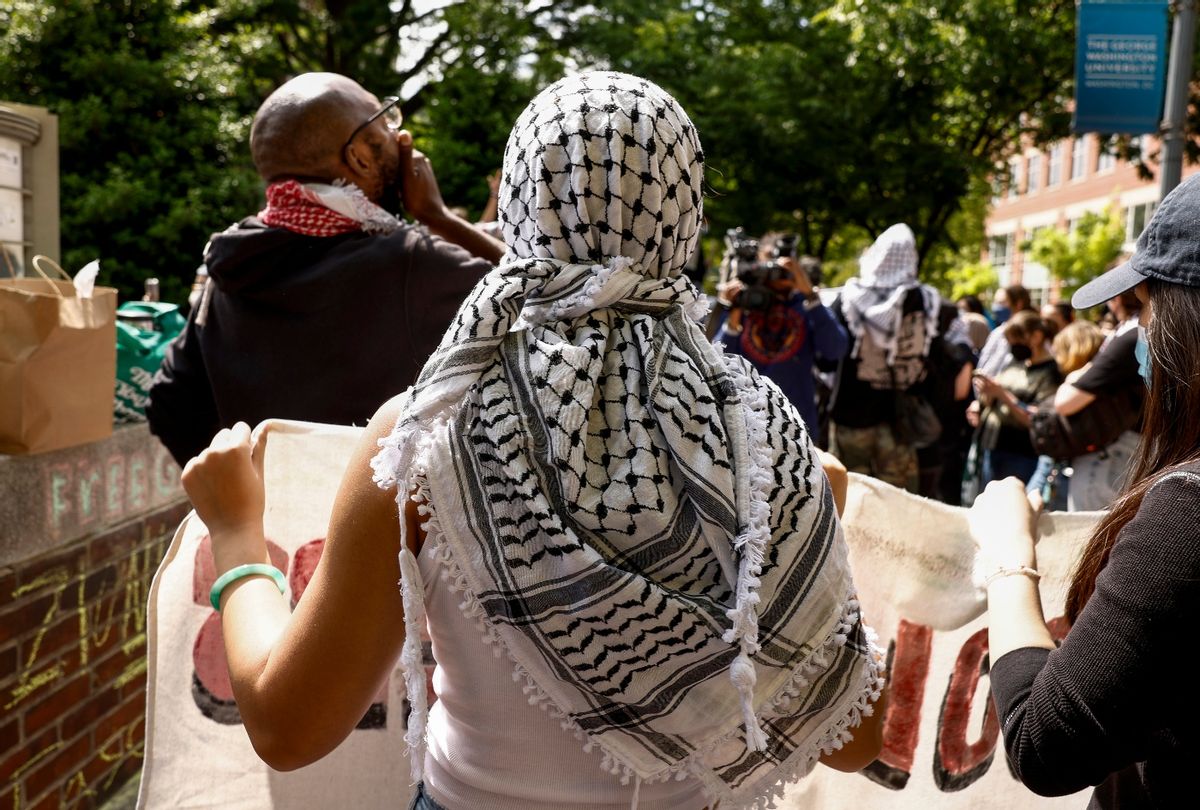As the war in Gaza between Hamas and Israel rages on with more than 35,000 Palestinians and 1,400 Israelis dead, tensions and violence across America's most prestigious universities have arisen. College students across the U.S. have set up encampments on properties at schools like Columbia, Harvard, Yale and UCLA to protest the war.
While these protesters come from all walks of life, one visible similarity is a white and black piece of clothing called the keffiyeh. Draped around protesters' and Palestinians' shoulders, necks, faces or heads, the keffiyeh is a Palestinian symbol of pride and resistance. Its origins are rooted in rich Palestinian history and struggle. Years ago, nomadic communities or Bedouins wore the traditional Arab headdress in historic Palestine, NPR reported.
The scarf is typically made of cotton but can be made with textiles like silk or wool with a distinct woven pattern. The keffiyeh can be in various colors like green and red but the black and white version of the keffiyeh has mostly become synonymous with Palestinians.
Some say that the patterns on the scarf represent aspects of Palestinian life. The black stripes on the border of the garment are said to mimic historical merchant trade routes that used to go through Palestine. The dominant pattern on the keffiyeh is its fishnet design. This represents Palestinians' ties to the Mediterranean Sea. Lastly, the curvy lines symbolize olive trees, a major point of pride, perseverance and strength for Palestinians. Alternatively, some see the wavy lines as symbols of wheat or the sea.
According to NPR, the first time the keffiyeh was used as a political statement was during the Arab Revolt in Palestine in 1936. This was an uprising against British imperial rule where Palestinians demanded sovereignty and an end to Jewish immigration. Palestinian fighters used the keffiyeh, usually draped around the face and head, to conceal their identities. This led to the keffiyeh becoming widely associated with the revolution. Revolutionary leaders also mandated that it was worn to express resistance and solidarity.
During the '60s, the keffiyeh was connected to Palestinian nationalism because it was worn by former Palestinian leaders like Yasser Arafat. Again, it held a larger significance, representing solidarity and resistance against the Israeli occupation. A story told amongst Palestinians is that Arafat folded his keffiyeh in a way – letting the side panel drape, paralleling the historic Palestine map – to remind him of the Dome of the Rock in Jerusalem.
We need your help to stay independent
Not much has changed in the keffiyeh's cultural and political importance for Palestinians. The garment still represents a continued struggle, yearning for freedom while also nodding to their history. However, wearing the historical scarf potentially has become a danger for Palestinian Americans. Last year, three Palestinian students, who were reportedly speaking Arabic, were shot in Vermont while one wore a keffiyeh. Law enforcement officials are investigating the shooting as a hate crime, PBS reported.
Despite heightened tensions, now it is worn by non-Palestinians across the world as a sign of solidarity and allyship. Similarly, people have also used the image of watermelons to emphasize their solidarity with the Palestinian people. NPR reports that people use it because the fruit's colors, red, black and green, match the Palestine flag. Others cite that activists use it to battle reports of online censorship and shadow banning. The symbol can be roughly traced back to Palestinian artist Sliman Mansour in the 1980s.

Shares